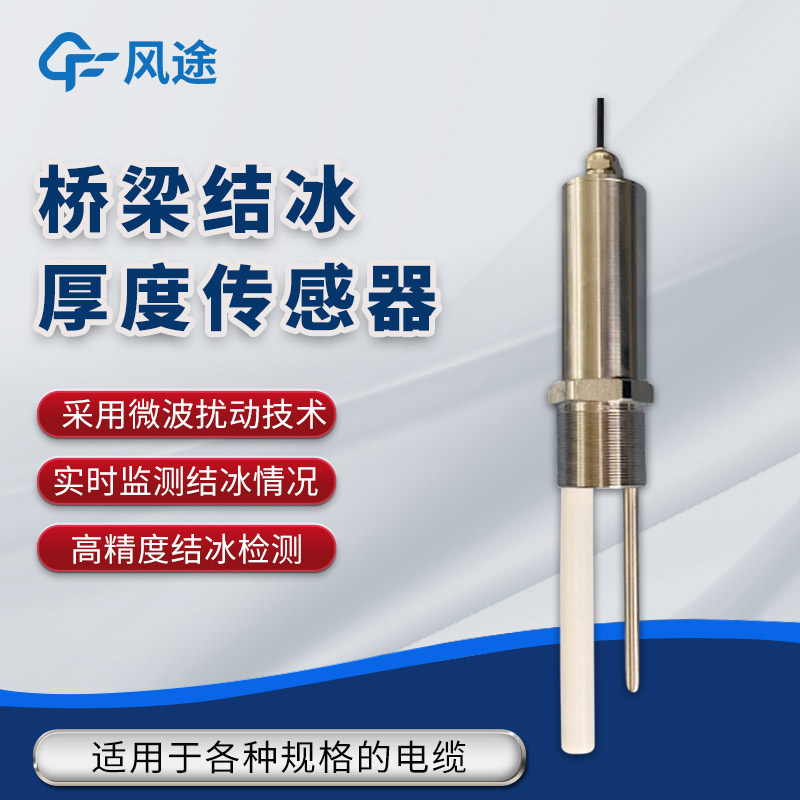Meteorological environment monitoring equipment supplier
Insist on doing high-precision customer favorite technology products
In wind power generation, icing on wind turbines is a highly destructive meteorological disaster triggered by special weather conditions. The large blades of those tall "windmills" can accumulate ice layers under specific weather circumstances.
Icing on wind turbines poses numerous hazards. On one hand, when the blades are iced, their weight increases significantly, and the load intensifies. Moreover, the uneven ice layer leads to a change in the blade's shape, severely affecting the service life of the wind turbine. On the other hand, lift decreases and drag increases. Even a slight amount of icing can greatly reduce the aerodynamic efficiency, causing a significant drop in the power output of the wind turbine. In many wind farms, the power loss due to icing exceeds one - sixth of the annual power generation. During extremely cold periods, a large number of wind turbines in wind farms may even shut down due to icing, threatening the safe and stable operation of the power grid. In addition, when the ice on the surface of the wind turbine, especially the ice on the rotating blades, falls off, it may harm people and wild animals in the vicinity and damage equipment and facilities. A 1 - kilogram ice block can be thrown as far as 200 meters away.
The formation of icing on wind turbines is closely related to air temperature, humidity, and wind speed. When the temperature drops to around 0 - 2°C, it is a prerequisite for icing. A relative humidity of over 90% can continuously supply water vapor for icing. When the near - ground wind speed is between 3 - 7 m/s, it can create ideal conditions for the transportation of water vapor. If the wind speed is too low, the water vapor cannot reach the blades; if it is too high, it is likely to blow away the newly condensed water droplets, which is not conducive to icing. Under extremely complex weather conditions, icing may grow and melt repeatedly. In short, icing on wind turbines is closely related to meteorological conditions.
After understanding the hazards and causes of icing on wind turbines, prevention becomes crucial.
For this reason, Fengtu has launched the Detecting Ice on Wind - turbine Blades FT - JB3H. It continuously monitors the ice thickness on the surface of the blades. Once the detected ice thickness approaches the critical value that may affect the normal operation of the wind turbine, it can promptly issue a warning signal. Based on these accurate data feedbacks, operation and maintenance personnel can formulate countermeasures in advance to avoid a series of serious consequences caused by the aggravation of icing, such as excessive blade load and a sudden drop in aerodynamic efficiency.
For example, if the sensors detect that the ice thickness on the blades of wind turbines in a certain area's wind farm is increasing rapidly under low - temperature, high - humidity, and suitable wind - speed conditions, the operation and maintenance team can take immediate action. On one hand, the wind turbines can be remotely controlled. According to the icing situation, the rotation speed can be appropriately reduced to relieve the additional pressure on the blades and slow down the growth rate of the ice layer. On the other hand, de - icing equipment can be prepared to carry out de - icing operations in a timely manner when conditions permit, ensuring that the wind turbines return to the optimal operating state as soon as possible. Moreover, by accumulating the data collected by the sensors over a long period, it is possible to further analyze the icing patterns under different meteorological conditions, providing a strong basis for optimizing the design and siting of wind turbines and comprehensively enhancing the ability of wind turbines to cope with icing disasters.
In conclusion, the Detecting Ice on Wind - turbine Blades provides convenient early - warning and prevention functions for the prevention of icing on wind turbines.
